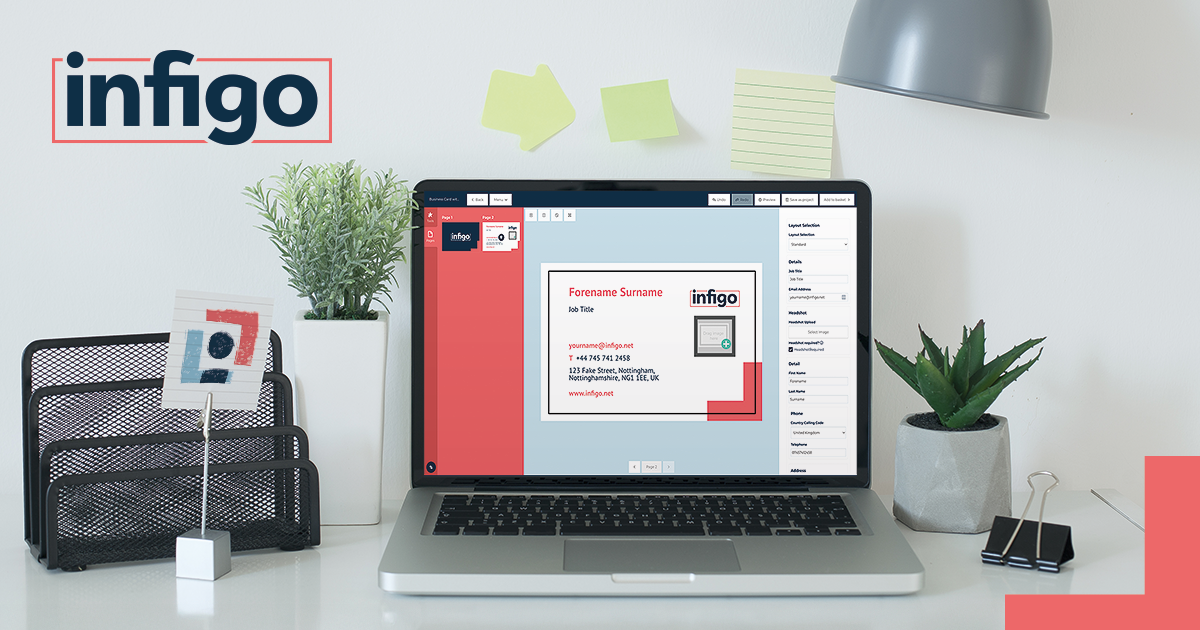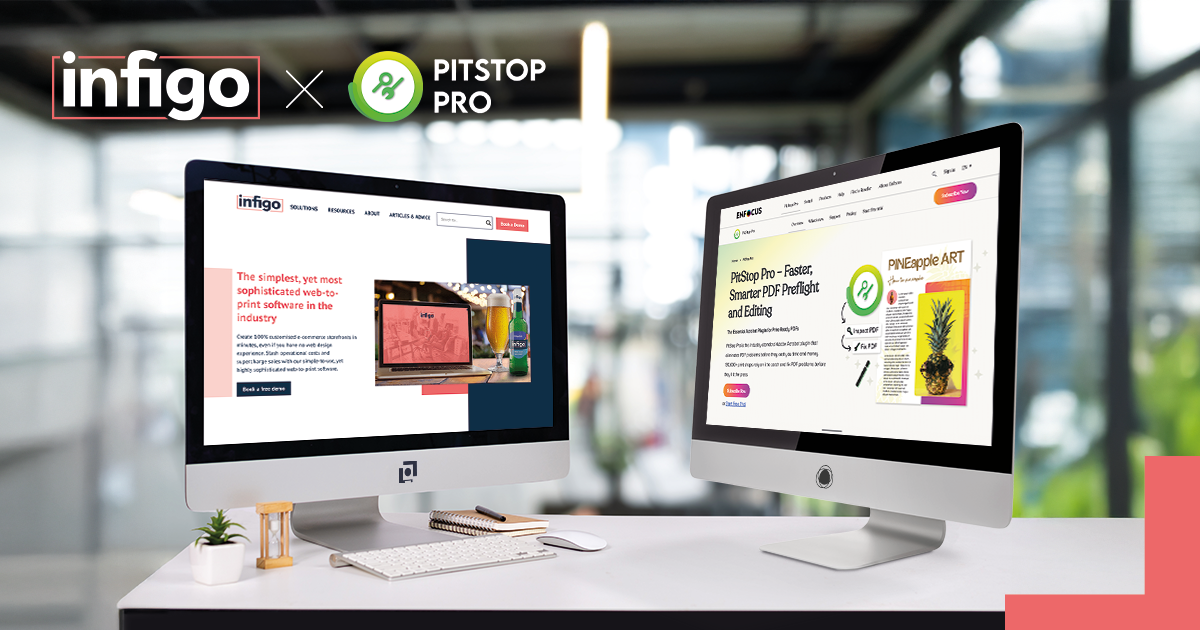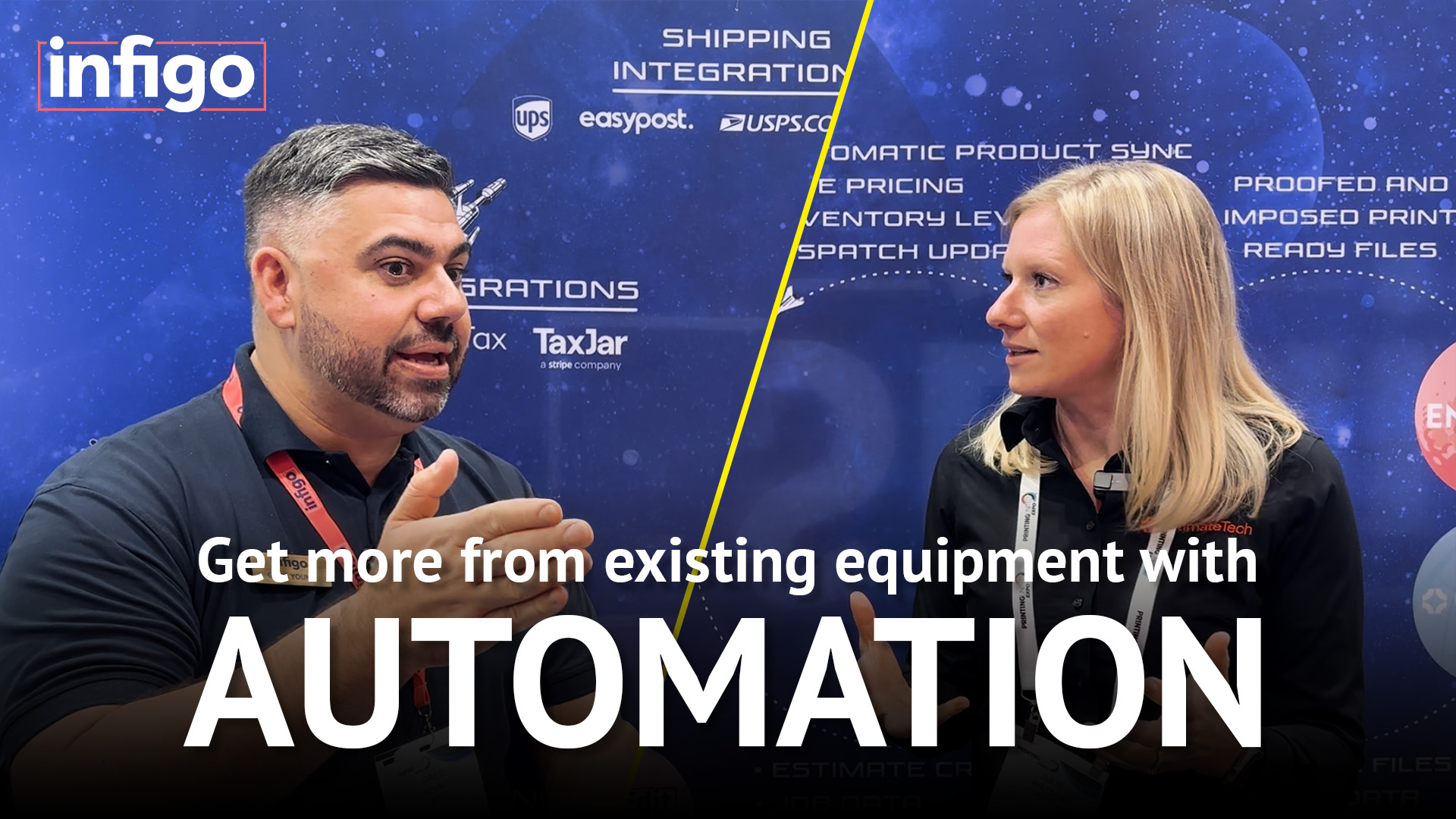“Imposition isn’t just for presses anymore – it’s a cornerstone of digital print automation.” In print, imposition refers to arranging multiple pages or labels on a single sheet for maximum printing efficiency. But with smart imposition software, it becomes the secret ingredient that transforms user orders into ready-to-print files – without bottlenecks, errors, or manual effort.
In this article, we explore how Infigo’s imposition engine works in real-world storefronts, including two very different client setups – – to show how businesses can automate their output, personalize their workflows, and save serious time on production.
What Is Imposition and Why Does It Matter?
Imposition is the layout process that determines how individual pieces of content (from labels, to flyers or tickets) are arranged on a printable sheet. Whether it’s a 4-up, 6-up, or fully custom layout, proper imposition:
- Reduces paper waste
- Speeds up production
- Ensures files are print-ready without needing edits
In a web-to-print storefront, imposition must happen automatically, intelligently, and behind the scenes-so that users simply click “order” and receive a perfectly prepared PDF file.
How Infigo Powers Smart Imposition Software Behind the Scenes
Imposition in Infigo relies on two main components:
1. MegaEdit Products (Templates)
These are the canvases – pre-built layouts with image fields that act as placeholders for the content (labels, pages, etc.). Each layout (4-up, 6-up, etc.) is a reusable product that determines how content is arranged on the final sheet.
2. Megascripts
A script is a set of instructions or commands written in a programming language, to automate software tasks – essentially, the brains behind the operation. Megascripts automate the imposition process by:
- Collecting the files ordered by the user
- Matching them to the correct layout template
- Generating a new imposed PDF
- Saving it to a download folder
- Notifying the user when it’s ready
Case Study: Blooming Color – Template-Based Imposition
“Set it and forget it” imposition for over 135 stores.
Blooming Color needed a simple, efficient way for their retail stores to order price tags and shelf labels. Each product was a static PDF, tagged with its layout type – either 4-up or 6-up.
Tagging Products
Each product is tagged in Infigo as either 4-up or 6-up. This specifies which MegaEdit template to use when creating the imposed file.
MegaEdit Templates
Each layout type has its own template, pre-configured with image fields. These fields are filled with the ordered PDFs during imposition.
Automation with Megascripts
Once an order is placed:
- The system gathers the files from a source folder.
- Fills in the correct template with the ordered pages.
- Exports the imposed PDF to a target folder.
- Sends an email letting the user know it’s ready.
Time-Limited Access
The imposed files are downloadable for configured hours, after which an expiration script removes them – ensuring the system stays clean and secure.
Result: Blooming Color’s retail stores get accurate, print-ready files within minutes of ordering – no production delays, no manual setup, no back-and-forth emails.
Case Study: LPI – The Enhanced, Configurable Model
“One layout doesn’t fit all – so we built a smarter one.”
While Blooming Color thrived with a static template system, LPI needed more flexibility. Their imposition model was enhanced to allow dynamic configurations – custom layouts, page-specific fields, and even barcode text generation.
How It Works: A Flexible Flow
Custom Configuration Files
Instead of simple 4-up/6-up tags, each layout is defined in a config file. These files specify:
- The layout name
- The types of fields (image, text)
- What content goes into each field
Smart Validation
The Megascript checks the folder structure, layout match, and ensures each MegaEdit product has the correct number and type of fields.
Dynamic Product Creation
- A temporary dynamic product is created.
- Each field (e.g., Img1, Barcode) is filled using source PDFs or generated data.
- The final imposed file is built and saved.
Clean-up and Delivery
Temporary files are removed, and the finished output is made available for download.
Result: LPI gets a highly adaptable system that supports multi-layout workflows, field-level customization, and scalable automation.
Why Smart Imposition Software Matters for Your Business
Whether your operation is simple or sophisticated, imposition in Infigo can adapt to your needs.
Automated and Scalable – Supports hundreds of weekly orders without manual prep.
Flexible Templates or Custom Layouts – Choose between predefined 4-up/6-up templates or dynamic config-driven layouts.
End-User Ready – Users get ready-to-print files in minutes – perfect for in-store printing, event signage, or on-demand labels.
Maintenance-Free for Admins – Expired files are auto-deleted, and every action is logged and traceable.
Let Imposition Work for You
With Infigo’s imposition engine, you’re not just batching PDFs – you’re automating creativity. Whether you’re a retail powerhouse like Blooming Color or a custom content provider like LPI, imposition in Infigo lets you:
- Scale your storefront
- Speed up turnaround
- Deliver print-ready results instantly
Imposition should be invisible to your users – but indispensable to your workflow. To find out how this process could transform your business, speak to one of our experts.




